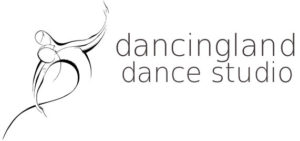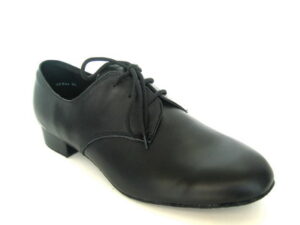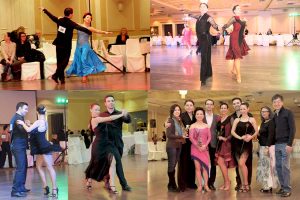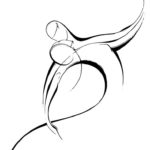Private dance lessons are the most efficient one-on-one learning experience.
Private lessons mean one instructor per student or one couple.
First of all, these lessons provide you with the advantage of an environment responsive to your specific needs through a personal connection with your instructor.
Your instructor will be able to work with you in detail on your frame, balance, ability to lead and follow the figures, and help you become a skillful and receptive dance partner.
Finally, a private lesson is the best time to master your technique and overcome any hindrances you may encounter.
Lessons are 45 minutes long. Booked at your convenience.
Group classes are designed to make everyone familiar with the dance patterns.
During these classes, you will practice the patterns and steps with your instructor and run through them with multiple partners. You will soon appreciate that group lessons are both fun and a great opportunity to learn from each other. Above all, both group classes and private lessons are important and complement each other.
Our party practice sessions will soon become the most enjoyable experience for you.
During these sessions, you will dance with other students to the music while socializing and enjoying each others’ spotlight performances. Some practice sessions will include pot-luck celebrations, which will be arranged according to the calendar events and holidays.
Tuition arrangements are determined on a case-by-case basis.
It is generally paid in advance, but your instructor will gladly discuss different payment options.
Methods of payment:
Cash, E-transfer, Check, Visa, MasterCard, American Express
(for the Visa, MasterCard and American Express transactions 3% service charge will be applied)
Understandably, our students have busy lifestyles, and sometimes even an emergency might occur. Your instructor will provide you with different opportunities to make up a class so that your busy schedule allows you to succeed in your dance program.
Do I need a dance partner to learn Social Ballroom and Latin dancing?” 
This is one of the most frequently asked questions.
The majority of the students come to class without a partner. The classes are arranged so that you either dance with your instructor or with other students in the same class. We keep changing partners, so everyone has a chance to dance and meet other students on the dance floor. In case you come with a partner and only want to dance with each other, your wish will be granted.
What is the dress code for the lessons?
Rule number one is to wear outfits you feel comfortable with.
Don’t forget that dancing is like a workout in many ways, so be prepared to move around a lot. Shoes are the most critical component. A leather bottom would be the best option for both your ability to perform dancing steps and your safety. Rubber soles grab the floor, which makes your dancing less enjoyable and might lead to an injury. Plastic soles would be an acceptable compromise if you are not ready to invest in specialized dancing footwear.
If you ARE ready to invest in specialized dancing footwear, please refer to these pictures:
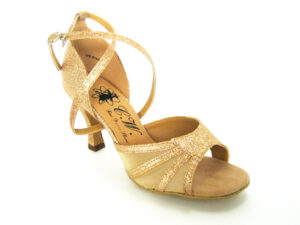
The program will be tailored according to your needs and abilities. Your Ballroom Dance Program will include Waltz, Viennese Waltz, Foxtrot, Tango, Rumba, Swing, Cha-Cha, Samba, Salsa, Merengue, Bachata and Hustle.
(At the end of this page you will find a detailed introduction of each style and dance)
What is the age range of your students?
We have a requirement of over 12 years old without an upper age limit.
The atmosphere at our studio can be described as mature yet informal and relaxed. Every new student will be gladly accepted by our constantly growing dancing class.
Can I compete?
The answer is “Yes!” and you don’t have to be a professional to participate.
Three primary types of competitions allow dancers of every level to compete according to their abilities:
Amateur
Professional-Amateur (Pro-Am)
Professional
So if you and your partner are amateurs and want to compete, you will be competing against couples of your age and dance level.
Those students who don’t have a dance partner can dance with their teachers and compete against other teacher-student pairs in the Pro-Am competitions, where judges will compare them against other students of the same sex, dance level and age in the teacher-student couples.
The first competitive dance level is the “Newcomer Level” for dancers who have less than 30 private lessons.
You can also pick the dance styles and grouping for your competitions.
Easy steps to counting the rhythm.
One of the most popular Frequently Asked Questions is how to count music.
It is natural for beginning dancers to be somewhat puzzled by a rhythmical pattern of a new tune. Don’t worry; some relatively easy steps would lead you through these intricacies, and you don’t even have to know the exact name of the dance!
As you already know, you can dance more than one style to some tunes; first of all, focus on hitting upon the rhythm.
Just pretend you are enjoying a concert, clapping to the pace of the melody along with a crowd of other admirers. Once you feel comfortable with the rhythm, try to locate the stronger (Accented beat) bit; this would be essential to synchronize your steps with the rhythmical pattern and, of course, your partner. For example, the strong-weak-weak count of a waltz bar of music will be pronounced as one-two-three, where “one” is a strong beat (heavy beat).
Different types of count:
You should also be aware that each count matches up with one step in dances like Waltz, Viennese Waltz and Merengue.
In contrast, in other dances (Foxtrot, Tango, Rumba, and Bolero), the count of one-two-three, etc., will be replaced with a pattern consisting of slows and quicks for every step. For these dances, the difference is not just one; two beats fall on each count “slow,” and one beat falls on each count “quick.”
Also, there are counts of one – two – three – five – six – seven for dances like Salsa and Bachata. We will hold extra cone cont without movement on counts three and seven.
How do you decide which dance goes with a particular tune?
This one is a difficult one out of all Frequently Asked Questions!
Everybody wants a shortcut to this skill, but only practice combined with time will do the trick.
First, you shouldn’t be afraid to choose one dance among several possibilities. In reality, more than one dance can be performed to some pieces of music.
You may try to figure out which culture this tune belongs to: Latin (South American), European or North American. Even the name of the performer can become a hint.
For instance, Frank Sinatra and Michael Buble’s repertoires mostly match the Foxtrot and Quick-Step. Elvis Presley and James Brown usually go with Jive, East and West Coast Swing.
When it comes to European music, you should pay attention to the mood and rhythm. Romantic, slow music that gives you a feeling of a pendulum swing motion would be a perfect Slow Waltz tune, and if the rhythm is somewhat faster, you may want to attempt a Viennese Waltz.
Style of music will give you a hint!
It is usually effortless to recognize Latin music that might be of South American and Caribbean origin. Once you know that you will be dancing to this kind of music, you should focus on the mood, rhythm and tempo.
A slow, sensual tune would unmistakably mean Rumba, while Cha-Cha is an exciting, faster dance with a syncopated rhythm.
As for Samba, you will effortlessly distinguish this bouncy, lively dance among other Latin tunes in no time.
When it comes to such club dances as Salsa, Merengue and Bachata, you will often be able to dance them interchangeably to many Latin tunes and songs.
Though all this might sound confusing at the beginning of your introduction to Social Ballroom and Latin dancing, it will eventually make perfect sense. As you take group and individual classes and participate in the practice sessions, your instructor will help you develop your understanding of rhythm and tempo and apply these new skills towards telling apart different styles and dances.
What is the Ballroom Dancing?
History, dances, styles, history, descriptions and details.
Dancingland Dance Studio at 3711 Chesswood Dr, Toronto, ON M3J 2P6
